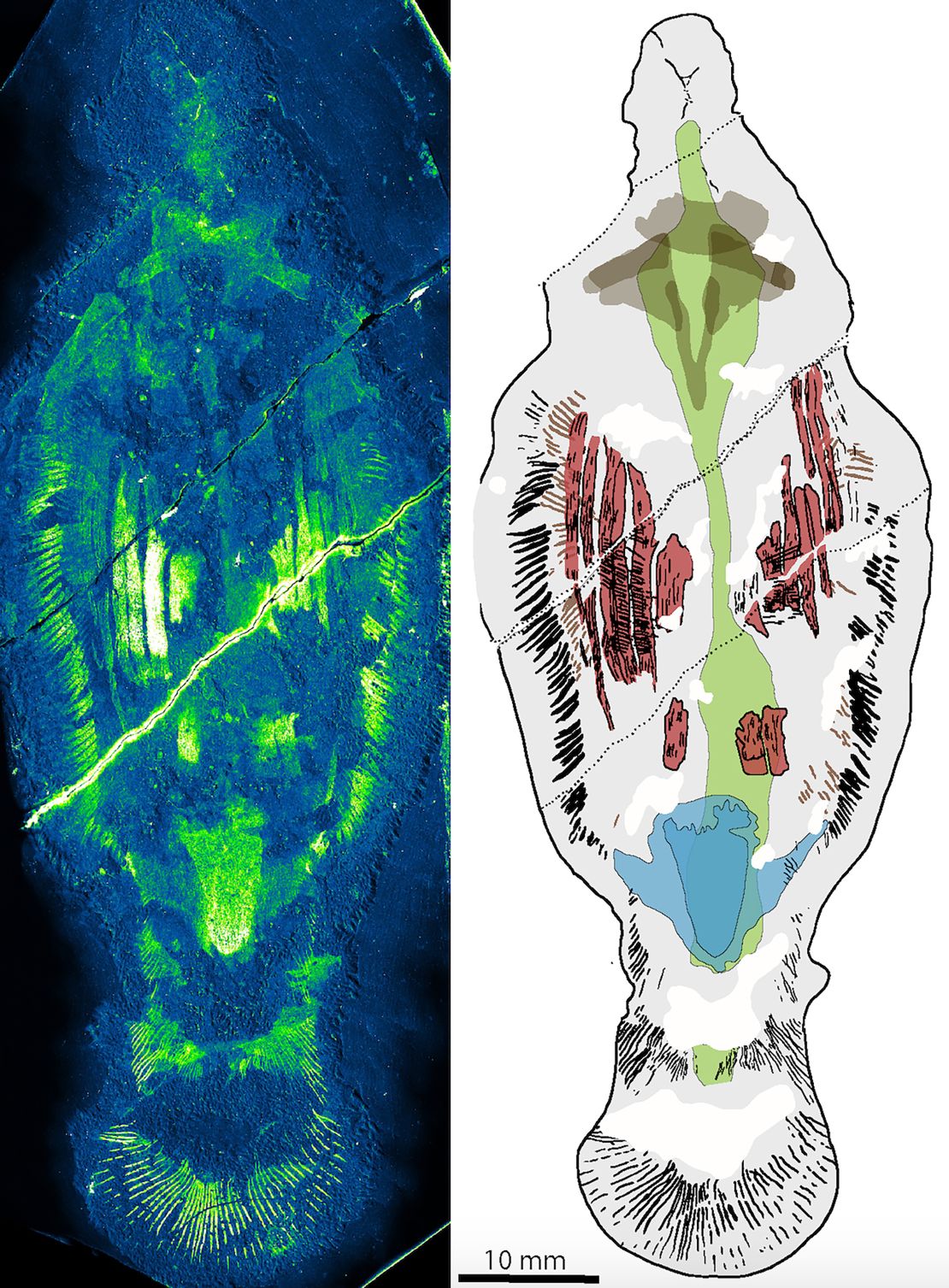
Newly discovered large predator worms ruled the seas as Earth’s earliest carnivores, study finds
Long before the first sharks appeared, large predator worms were the “terror beasts” of the seas more than 500 million years ago, according to new research.
Scientists discovered fossils of the previously unknown worm species during expeditions in North Greenland, uncovering what they believe to be some of the earliest carnivorous animals.
The worms reached nearly 1 foot (30 centimeters) in length and were some of the largest swimming animals at the time, known as the early Cambrian Period.
The researchers named the worms Timorebestia, Latin for “terror beasts.” Fins marched down the sides of their bodies, and their distinctive heads had long antennae and massive jaws.
Previously, it was believed that primitive arthropods, including strange-looking distant relatives of crabs and lobsters called Anomalocaris, were at the top of the marine food chain during the Cambrian Period, which lasted from 485 million to 541 million years ago.
But the predator worms were a key part of the ecosystem 518 million years ago that scientists didn’t even know existed until they found the fossils. A study describing the findings published Wednesday in the journal Science Advances.
“Timorebestia were giants of their day and would have been close to the top of the food chain,” said senior study author Dr. Jakob Vinther, associate professor in macroevolution at the University of Bristol’s Schools of Earth Sciences and Biological Sciences, in a statement.
“That makes it equivalent in importance to some of the top carnivores in modern oceans, such as sharks and seals back in the Cambrian period,” Vinther said. “Our research shows that these ancient ocean ecosystems were fairly complex with a food chain that allowed for several tiers of predators.”
During the Cambrian Period when carnivorous predators appeared, “animals explosively evolved for the first time,” Vinther said. “It had a tremendous impact on the carbon and nutrient cycles as well as the pace of evolution.”
Tracing an evolutionary path
These predator worms are distant relatives of the much smaller modern arrow worms, or chaetognaths, that feed on zooplankton, Vinther said.
Arrow worms are considered to be among the oldest animals that originated in the Cambrian Period. Arthropods first appeared between 521 and 529 million years ago, while evidence of arrow worms suggests they existed as early as 538 million years ago.

“Both arrow worms, and the more primitive Timorebestia, were swimming predators,” Vinther said. “We can therefore surmise that in all likelihood they were the predators that dominated the oceans before arthropods took off. Perhaps they had a dynasty of about 10-15 million years before they got superseded by other, and more successful, groups.”
Preserved within the fossilized digestive system of Timorebestia was Isoxys, a swimming arthropod that had long, protective spines pointing forward and backward.
“However, they clearly didn’t completely succeed in avoiding that fate, because Timorebestia munched on them in great quantities,” said study coauthor Morten Lunde Nielsen, a former doctoral student at the University of Bristol, in a statement.
Uncovering details about Timorebestia provides a window into the evolutionary timeline of worms from half a billion years ago to the present day, the researchers said.







